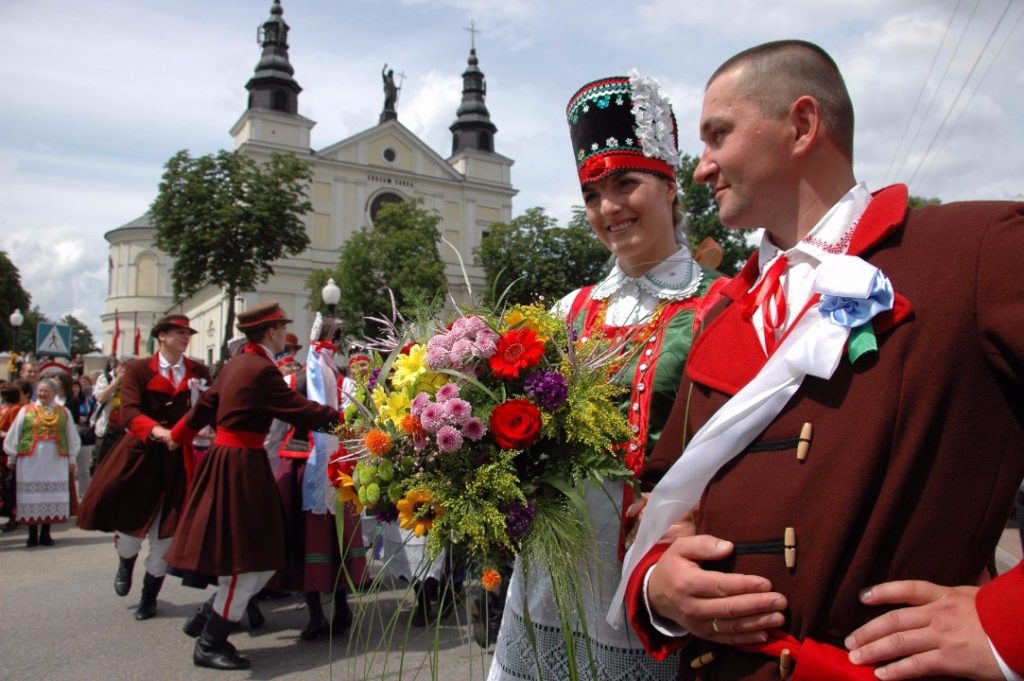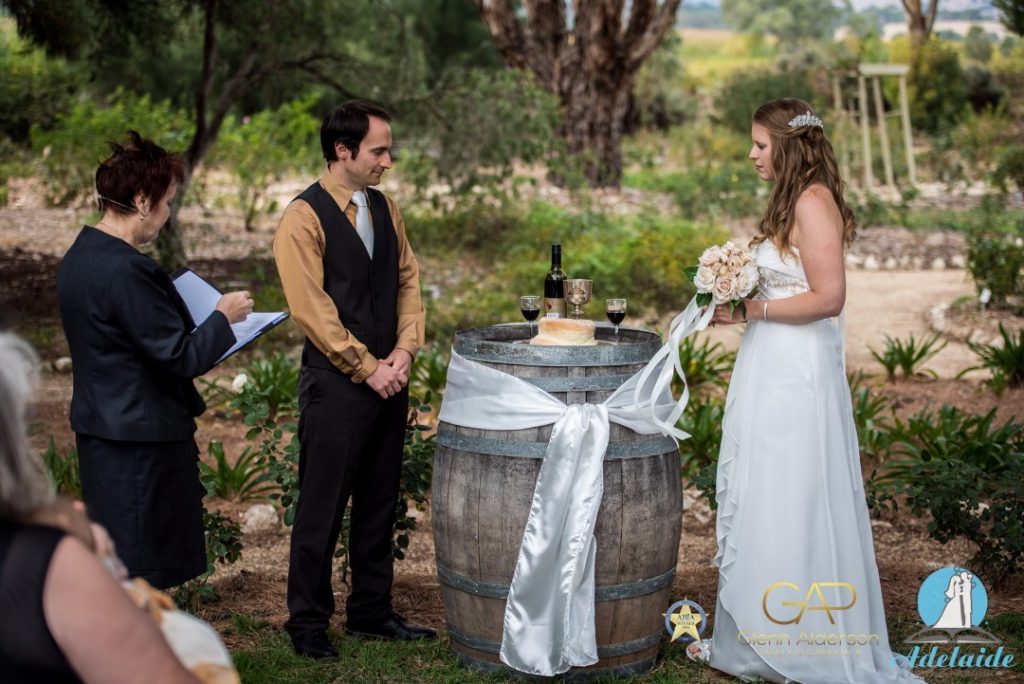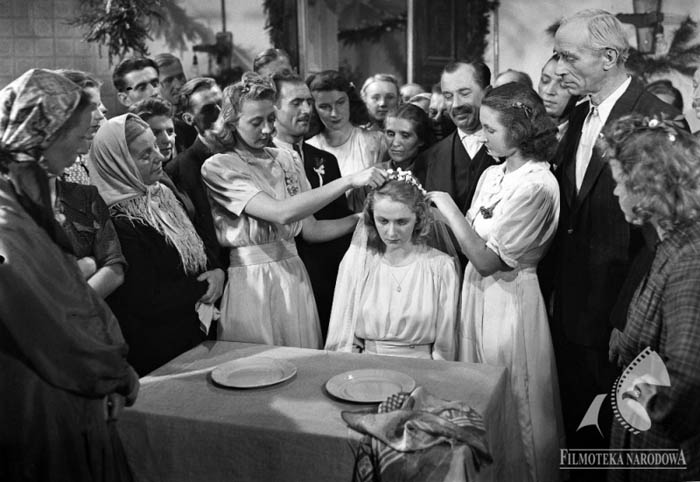
Have you been invited to a Polish wedding, but have no idea about their customs or traditions? Or are you marrying a Polish and wish to know his or her traditions and customs before the big day. If you are nodding your head in agreement, you’re at the right place. In this article, we’ll share the beautiful traditions of Polish wedding with you. Stay tuned!
You May Also Like To Read:
- British Wedding Traditions- A Royal Affair
- Mexican Wedding Traditions
- German Wedding Traditions
- Pakistani Wedding Traditions
Pre-Wedding Ceremonies:
A Polish wedding begins with Oswiadczyny, or what we call the engagement ceremony. It’s a small get together held in either the place of the bride or the groom. This function allows the in-laws to meet and know each other.
Invitation:
Next, comes the invitation, which is first handed over to bridesmaids and groomsmen. If you are invited to a Polish wedding, make sure you read the invite thoroughly. An invitation to the ceremony does not mean an invite to the party afterward.
In the rural part of Poland, the invitation is sent out to everyone in the village. And if anyone is unable to attend the wedding, they need to inform the bride and groom beforehand and must send the family a gift.
Venue:
It’s no news that Polish weddings usually take place in churches. That’s because almost everyone there has ties with the Catholic church. Even the wedding ceremony is followed according to the Catholic rites.
Nontraditional couples prefer a non-religious setting for their weddings, like a local magistrate’s office. No matter where they are getting married, they need to have two witnesses present to sign the documents.
Bachelor And Bachelorette:
Bachelorette parties take place usually on the night before the wedding, but some can host a week or two before the wedding. A Polish bachelorette usually includes just the bride or the groom with a group of friends drinking and partying. Some prefer staying home, playing games and listening to music.
Pre-Wedding Ceremony:
Since Polish weddings have to include both civil and religious aspects, it is crucial that the wedding takes place both inside and outside the church. It usually begins with the pre-wedding blessing. Before heading to the church for the marriage ceremony, the guests gather at the bride’s house to send off the couple with a symbolic farewell. The bride and groom kneel on the cushions or kneelers and hold the hands. Then they are given a crucifix by the bride’s mother. The bride’s mother showers blessing on the couple and sprinkles holy water on them. This is followed by the bride’s father, the groom’s parents and other members of the family. After everyone has performed their part, the couple hugs and kisses their parents and then head to the church.
The Wedding:
In Polish wedding, the bride and groom enter the church at the same time and walk the aisle together. If they arrive separately, the bride will wait for the groom in the church so that they can walk up the aisle together. The couple is followed by the groomsmen and then the bridesmaids.
Pre-Ceremony Instructions:
Before the wedding, the bandleader or the Maitre’d as they are known as in Poland will introduce the parents, the bridal group and the bride and groom to each other. After the introduction, the parents of both bride and groom have to walk to the main table in the front and wait for the newly married couple. This will be accompanied with the Polish wedding march playing in the background. The bride and groom will first circle the dance floor to greet the guests and then walk down the aisle to the main table where the ceremony will be conducted.
Post-Wedding Ceremony:
You’ll get to see an entirely new set of traditions after the wedding. While the couple exits the church, they are showered with a handful of loose change, which they should pick up. This is believed to bestow luck and prosperity to the couple.
After the coin shower, the guests line up to bless the couple and kiss the bride. They shake hands with the groom and hand an envelope of money to the groom.
In some places, the bride can also throw a handful of straws on young girls and boys and the person on whom it lands is believed to be the first to marry. Also, the first bridesmaid to touch the bride or the bride’s flower would be married the same year.
Salt And Bread:
On arrival at the reception venue, the couple is given bread dusted lightly with salt. The names of the couple are also carved on the bread. There’s a deep symbolism associated with this custom. The bread signifies prosperity and the salt represent the difficulties that the couple may have in the future and learn how to cope with them.
After the bread and salt ceremony, the couple is presented with their first toast, which is usually two glasses of vodka and one glass of wine. The bride is first offered to select one of the three glasses, followed by the groom. It is said that the one who chooses vodka would be the dominant one in the relationship. Besides, the wine or vodka signifies that the couple will never die of thirst. After drinking the wine, the couple breaks the glass for good luck.
Reception:
While heading for the reception, the couple has to go through a barricade set up by the guests. As they arrive, a Polish or polka band begins playing music. One song that is heard at every Polish wedding is “Sto Lat’ a 100-year-old song played in the hopes for a long and a prosperous life.
The Oczepiny Ceremony:
The Oczepiny ceremony, which takes place at the stroke of midnight, represents the bride turning into a married woman. The non-married females have to circle the bride. The circle of non-married female will now make way for a circle of married females. Next, the maid of honor will stand behind the bride and remove the veil. A married woman will step up and pin a cap on the bride’s head. The cap is generally gifted by the bride’s godmother. The bride should refuse the cap at least three times, as it means the loss of youth and freedom. And once she accepts it, it becomes a symbol of marriage that she has to wear on special occasions.
In the early times, the married women also cut the bride’s hair as long hair was considered a symbol of girlhood freedom. These days, the bride just removes the veil and throws to the unmarried girls. Sometimes, even the groom joins in and throws his tie on to the male guests.
Polish Wedding Food:
A standard, 12-hour long wedding is accompanied by four to five entrees, along with cake, fruits, pastries, and appetizers. A hot meal is served in every three hours.
As for the menu, it varies on the taste of the couples, but herring, soup, pates, cheese, veggies and meat are preferred.
A wedding cake is a must, as with most of the Catholic weddings. The bride and the grooms cut and eat the first piece of the cake and the rest are served to guests.
We hope you enjoyed learning about Polish wedding tradition. If you have anything more to share, tell us by commenting below!







